How to make the most of a parts car
Modern enthusiasts have it great. Amazon, eBay, Craigslist, Facebook Marketplace—all of these databases provide instant access to new and used parts for your car. It wasn’t always so simple. Those of us restoring a collector car are keenly aware that at some point in the future (if it hasn’t happened already) parts availability will dry up like Lake Mead. When the waters start receding, it can take a lot of work and money to track down parts you may one day need. At that point, a dedicated parts car starts to look like a seriously appealing option. In one fell swoop you can have your very own supply, all bought and paid for, to pick from as you wish.
I consider myself an authority in these matters as a confessed hoarder of several parts/project cars, all crammed into every possible space I can find. A friend of mine has 2 lifts in his suburban 2.5 car garage and has compacted seven cars (four of which are operable and accessible) and five motorcycles into it. Many cars (particularly sports cars) can be stripped and the shells rolled over on their side with proper padding and/or bracing. Since these cars are generally less than 4 feet high, you can sardine them three-wide this way in a 12-foot-wide, single-bay garage. And, with some clever use of 4×4 posts, another layer of three cars can go on top and still fit under your ceiling! A body shell also can be hung on a wall with the right engineering, as, ahem, “wall art.”
All that said, one should invite a parts car into the fold only with full awareness of the implications. So, let’s take them apart, piece by piece.

The parts predicament, explained
A little background, first. Dealers and auto parts stores are, let’s be clear, in business to make money. Only parts that dealers expect to sell will remain in stock, according to the rules of what are called “inventory turns,” or, how often a particular part moves off of the shelf. Motor oil at your favorite auto parts purveyor has a turn value of 8 to 20 times per year. When that number falls below 2, the shelf space becomes too precious, and parts are moved to “behind the counter”—a dark and mysterious place known only to logo-shirted workers. Then, worse yet, part numbers are relegated to the “warehouse” or “distribution center.” If these places sound lifeless, it’s because they’re the elephant burial grounds of part numbers; once there, the inventory turn will soon get so low that the part number is put on life support. Eventually it disappears altogether, assigned the scarlet letters “NLA” (No Longer Available) with nary a whimper.
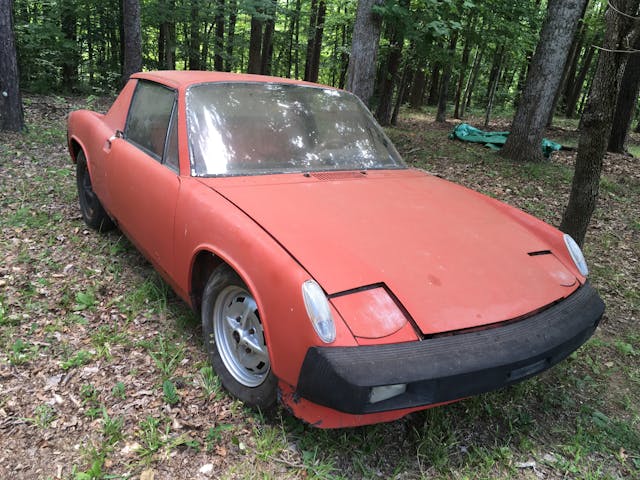
Likewise, when your car’s model is introduced, the manufacturer makes replacement parts readily available. If you drive your new Whatsit 3000 on a vacation and need an oil change a few months later, you expect the dealer to have an oil filter in stock, and they will, even if it’s an Alfa Romeo or Mini dealer four zip codes away. Fast forward a few years into your car model’s life, and tons of parts will remain available, both from the dealers and from the aftermarket. Somewhere about 15 years out, the landscape changes. Parts start to be considered “special order,” at an independent parts counter. One by one, part numbers are dropped off of the list until you are left to your own devices. Eventually, even the manufacturers will run out of parts on your list. Now, the problem falls into the hands of the enthusiast community.
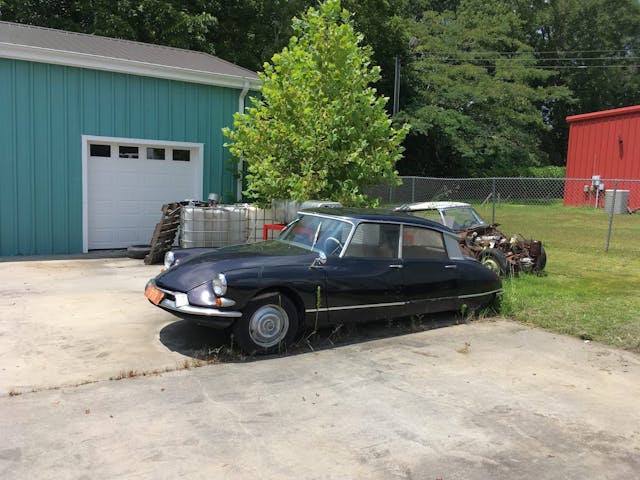
Shopping online
Somewhere along the way, a collector of your particular car has hoarded and stashed parts for a rainy day. If they want to offload some of this booty, it will appear listed online for you to stare at for long stretches of time, wondering if it’s legit. Generally, the chances we take in this arena work out pretty well. I had the great fortune of purchasing a fender online for one of my classic motorcycles, and it arrived in perfect condition, with the bonus of wearing the correct factory color. The part was priced fairly and represented honestly. Makes you feel like the human race has something going for it.
In many cases, these online listings stem from a parts car that the seller is slowly dissolving into the community, one piece at a time. This commerce (enabled by the internet) has, in my estimation, made all of our restoration jobs easier.
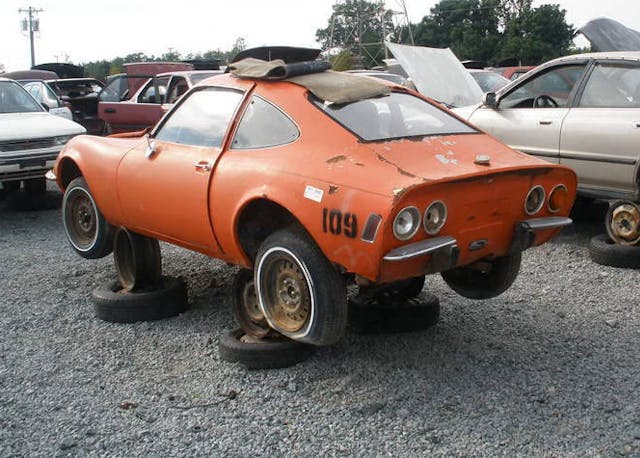
Joys of the junkyard
In the old days, these transactions happened in person, at a junkyard. I have spent many a pleasurable Saturday afternoon shopping at such establishments for 6mm bolts and nuts with 10mm hex heads and impervious yellow zinc plating. (Pro tip: hound the Japanese car aisle for these.) Back when Pull-a-Part, do-it-yourself junkyards came into play fifteen years ago, you would actually see desirable cars strewn about the gravel lots. Fastback Mustangs from the right years, MGBs, Midgets, lots of XJS’s, a BMW 318is—all were showing up at my local Pull-a-Part for slow disassembly by enthusiasts like you and me. It was a public operating theater for the cost-conscious DIYer.
About five years ago, maybe, I noticed the stream of interesting cars at junkyards had dried to a trickle. Everyone’s backyards had been plucked clean, leaving us with junkyards full of gray twelve-year-old Accords and Camrys. If a wellspring of free flowing parts for your car endures, it’s almost definitely a more modern machine. If you’re out of luck, it might be time to bring the junkyard to your yard. As in, buy a parts car.

Buying a parts car
Occasionally you’ll see a dilapidated car, perhaps one with body damage, listed outright as a parts car. Other times it’s thrown in as baggage as part of another transaction:“I’ll accept your lowball offer on my ’67 Torino, but you have to take the awful other one with you, or it’s no deal!” (I picked up two old Triumphs this way and immediately sold the worse one due to lack of space.)
Other parts cars earn their status by virtue of demotion. One of my son’s Porsche 914s suffered this fate. When each of my sons turned 12 or so, I hunted down a broken sports car for them to restore (with my help, or not) so they’d have a car when they turned 16. With the 914 in question, we purchased a slightly rusty, very dead red ’75 model (in 914-speak this means the doors will still close as proof the chassis has not yet collapsed in the middle). We pulled the engine and set about transforming it into a hot rod powerplant. While scouring for parts at a local race shop we found a less dead 914, painted blue. Red 914 was immediately relegated to sad parts car status, and blue car became the not-so-shiny new penny. Fickle is the affection of the desperate.

The red 914 slowly, willingly gave up its parts like Shel Silverstein’s “The Giving Tree,” until we sold its hapless carcass to a doctor in Tennessee. After all, our red car was a less-rusty 914 shell than what he already had.
So, you got one! Now what?
It must be said: Parts cars come with baggage. For starters, they take up room. If your restoration project has already claimed the family garage, adding an identical (but more dead) example of the same car is tough to explain to those outside our hobby. Parking the poor thing in the the driveway or chucking it into the side yard will, at minimum, earn you sidelong glances. Homeowner’s associations, should you be burdened with such a governing body, are particularly, uh, enthusiastic when it comes to visibly decrepit machinery. Before you drag a parts car home, have a plan for a safe place to put it.
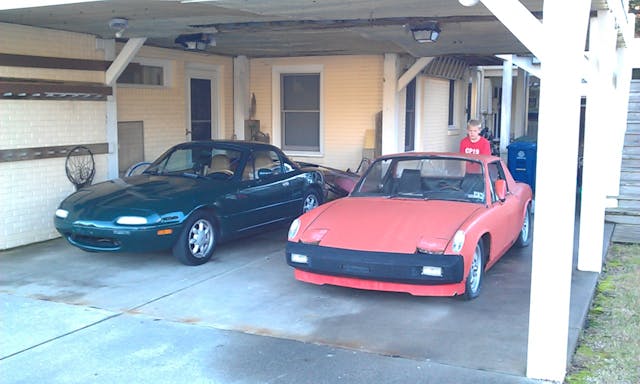
A little creativity doesn’t hurt. Take that lift you always wanted for your garage, which offers the promise of “parts car up high, good car below.” Perhaps you can get permission for outside storage but with the caveat of a deadline, as in “You can store that hunk of crap there for the summer but by Halloween it has to be gone!” In this case I would suggest starting the disassembly process right away. Ziploc bags, hanging tags, and Sharpies are your most important tools for storing and labeling small items. It is quite possible to remove, tag, bag, and store almost a complete car in the rafters of a garage (or a home attic); it is not guaranteed that you will remember which unmarked caliper belongs to the driver’s or passenger side brake when you need it. Fenders, engines, transmissions, and axles don’t apply here, but however much you are tempted, do not leave these exposed to the elements. Even under a tarp in the backyard. Aside from the resentment such a move will brew with your fellow tenants (read: spouse), the parts themselves will deteriorate into an unusable state in about two seasons. Find a place to store them where it is dry and out of the way. Peace will prevail come the day you revisit your patient stockpile.

The other issue with parts cars is one of quality componentry. A caliper that has been sitting out in the weather for a decade is possibly an even worse bet than the leaky one you are trying to replace. Again, in today’s world you might be better off finding a part from eBay or similar. That route can be its own brand of crap shoot, since there exist various grades of crappy parts, trying to make something that is less crappy than the crap you started with. In any case, aim to get as close to factory spec as possible; you don’t want to be stranded because of something stupid, like a blown radiator cap rated for the wrong pressure. The buck stops with you.
How does one know when to err on the side of repair, rather than replace? Hard parts, made from metal, are generally restorable and only are scrap-heap fodder in the worst of cases (cracked, pitted, etc.). Plastic and upholstery parts, however, do not age as well, and sometimes what’s left from the parts car is no better. Occasionally it’s even worse; a parts car is always neglected in favor of the recipient car, which means degradation can happen even faster than on a car that is regularly driven. Nothing is more frustrating than digging out a part on your donor car, only to find it’s useless. Why did I buy this pile of garbage in the first place, you will scream at the heavens.
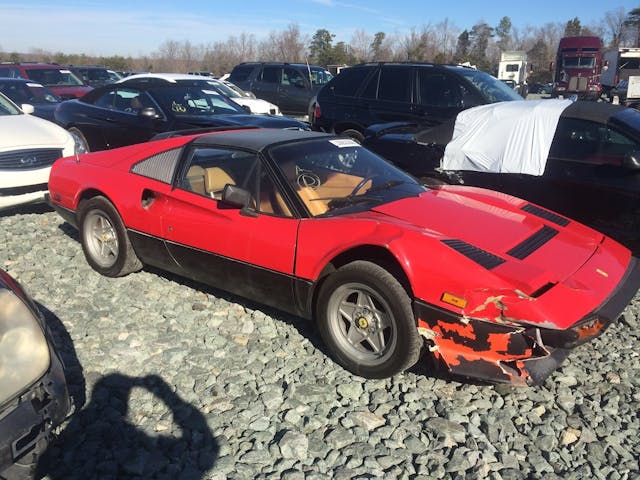
Be realistic, be practical
We car restorers, by nature, are an optimistic bunch. Sure we can fix that, we say to ourselves. Of course having a parts car is a good idea … No one will mind if I get another project car—it’s who I am, for goodness sake. As comforting as a parts car may be, one has to take care and keep perspective. Some cars lend themselves to hoarding, for whatever reason. I have met dozens of men with a flock of Corvairs. MG Midgets/Sprites invoke the same instinct (maybe because they’re small?). Watch a few episodes of Barn Find Hunter and you will see lots of folks who seem to find safety in numbers. At a certain point, too many cars makes life harder, not easier. Everyone’s threshold here is different.

Have fun, enjoy it
If you have the land for it, a parts car can bring a lot of happiness. You can even be magnanimous about it by spinning up a very satisfying hobby business, helping like-minded owners of the marque by selling them parts online for easy beer money. If, however, you happen to be hawkeye-focused on a singular restoration project, and space is an issue, letting others store your “parts cars” remotely may make more sense. Whether this will cost you rental fees or simply goodwill with friends depends entirely on your situation.
Just remember to honor your parts cars for their sacrifice, and make sure to take extra-good care of the car you’re keeping alive. Best to gather up good karma before passing through the gates of the big junkyard in the sky.
Check out the Hagerty Media homepage so you don’t miss a single story, or better yet, bookmark it.
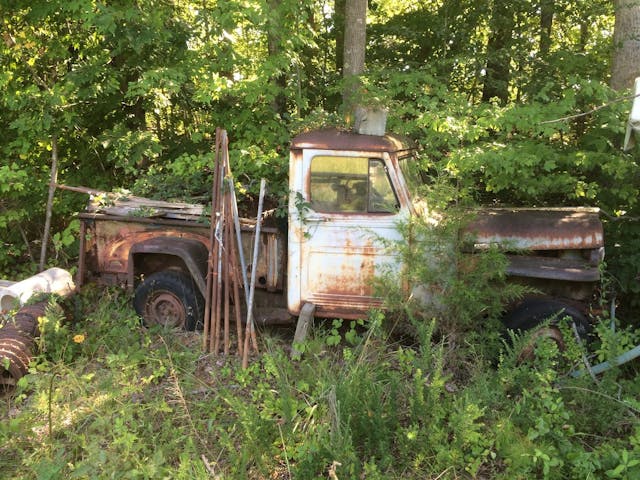


I’ve never been real big on the concept of the parts car.
For one – everyone generally needs the same parts. If they are actually in your ‘parts car’ and work, it is probably still servicable as a whole car
I don’t know how many times I have run across people who have bought parts cars, found them to be in better shape than their project cars, and contemplated swapping the good stuff to the parts car… it’s the kind of conundrum that can derail a project pretty fast
Personally, if I have room for a parts car, then I have room for a whole (other) car
I’ll stick to ebay and let someone else deal with the car storage
I agree with TG here. II live on a ranch, with lots of space and even some that is inside of outbuildings, so storage of parts cars wouldn’t really be a big issue. But in my experience there are two types of parts cars: 1) one that’s in fairly good shape and has most everything intact, and 2) one that’s so beat up or deteriorated, or has been so scavenged of good stuff that there’s very little useable stuff on it. The first one should either be made into a project car or sold to someone else who wants to fix it up. The other should really just be scrapped. I realize there are shades here, and that 1) or 2) doesn’t apply too 100% of parts cars, but for purposes of wanting to devote time, money, and space to something, if it’s very close to either of these, it’s not worth it to me.
I have bought quite a few parts online and rarely been burned. Most places like eBay will have ratings for sellers, and I usually don’t take chances with those who don’t have big numbers of satisfied buyers. I let them go through the hassles of owning parts cars. My experiences might not be universally applied across all types of vehicles and situations – “your mileage may vary”! But I’d advise anyone who’s thinking of acquiring one or more parts cars to think through all of the cons (most listed by Norman) VERY carefully before pulling the trigger.
I parted out a 1995 BMW 530 with a 5 speed transmission a few years ago. I bought it for $385 and it didn’t run. I was going to make it run and sell it. But I got to a point where I was getting in pretty deep and it still didn’t run. I couldn’t afford to pay a mechanic to diagnose it so I parted it out. I sold the 5 speed with pedals for more than I had in the car. Over the course of a few months I made a pretty tidy profit on that car.
I live in a non HOA subdivision. But we have an evil witch for a mail lady. She sticks her nose everywhere it doesn’t belong. Once, my mailbox and post were getting a little shabby. At the same time I had a 98 Chevy 2500HD sitting in the yard with no registration. Somehow, on the SAME day she left a note on my mailbox saying she wouldn’t deliver my mail till I fixed the post the local marshal showed up and told me I had to get rid of the truck. WITCH!!! No Christmas card for her!
Anyway, the Vortec 5.7 wound up getting rebuilt and beefed up to go in my 68 Falcon that I keep at work. Away from the prying eyes of the witch mail lady.
I know a guy who did this with an airplane. He had a ragged our Cherokee 140 and bought a parts plane. The parts plane turned out to be in better shape than his, so he swapped the data plate. Then he discovered that the FAA takes a VERY dim view of this and he got into a huge amount of federal trouble. Ouch.
Guilty! I have several “parts cars” some were rescued because the alternative was the crusher, some came with purchase of a “nice car” that included a parts car and some purchased because I needed a donor car for a project. Some of these are still to “good” to let go! A 61 Cad Fleetwood that is very complete should not be a parts car, or the 48 Cad either! The 60 Rambler wagon with some very good parts, just what should I do with these?
The Red 914 looks great. Italian turn signal lens’, Mahle alloys, good gaps at the door. I recently sold my 914 parts car for $4500. I paid $3,500 for the car in 1978 and drove it for many years. The parts car applies aptly to the 914 world. “ran when parked” is the typical FB Marketplace ad. I bought a 914 for $950 and sold the motor and trans for $1000. Of course the doors flew open in turns because of the fact the rockers were rusted out. The article ignores the fact that neighbors dont usually look fondly at the scrapyard next door of unlicensed cars and then the cops get involved….
I’ve acquired several parts cars over the years and found that they are a gross waste of space. I still have a ’40 Packard running gear, of which I’ve used one rim. I had a ’94 LeSabre parts car, from which I used a few fuses. It entertained my dog one winter when a pair of raccoons decided to spend the season under the hood. He literally tried to remove the grill with his teeth ! I ended up donating that car to the local volunteer fire department for practice with their jaws of life. If you have some space, it’s worth stocking spare routine maintenance items. It’s also handy to have a retired parts guy for a friend, one who knows how to research interchangeability from year to year. Vehicle-specific forums are also helpful. As a last resort, there’s what was once the mainstay of the hobby, the swap meet. Meets like Hershey and Carlisle are still well attended.
In my rebuild of a 1966 Corvair Corsa convertible, after having the car sandblasted, it was clear that a bunch of it — things like the rotted through front wheel tubs — were irreparable by fabricating new ones. A “donor” car was required, but there was a problem. A lot of the convertible bits were Not the same as the coupes, so a donor convertible was required. Hard to find, since folks generally prefer to restore the convertibles if at all possible. By happenstance, I ran across a 1965 Corvair convertible in Boise, ID. It was 400+ miles away, but from the photos it was one of those cars that the owner always intended to “restore” but was so far gone it wasn’t going to happen. Another problem was that it had no suspension underneath, though all the parts were there. So borrowed a trailer from a friend, and another friend and I did a two-day trip to Boise. Loaded the car on the trailer, packed the back of my Silverado 3/4 ton with boxes of extra parts, and got it back home. The body shop guy cut it up to salvage unibody parts from it that could be used, and the rest of it and a lot of the extra parts I just gave to a local Corvair expert for redistribution to those who could use them. I certainly couldn’t, and having them just sitting around took up space and a Lot of time. I guess my main observation is that a “parts car” shouldn’t be just similar to the one you have. It should, insofar as possible, be an Exact match to what you are rebuilding. Otherwise, you find small differences from year to year and trim level to trim level. Even small things that are easy to overlook differ in important ways. I bought a rear engine lid from a 1965 Monza 110, to discover that the trim differed from the 1955 140 trim piece in the location of the mounting holes. So had to weld in the old ones, re-drill new holes for the proper trim piece, and refinish. That’s another half day of metalwork and it’s important it be got right. Matching the parts car as exactly as possible to the one you are rebuilding saves a lot of time and money. And especially aggravation.
The problem comes when the hoarders buy up all the parts cars and then never do anything with them, leaving them to return to the soil because they can’t bear to part with anything in case they might ‘need’ the parts for the other cars they have that will never be restored either. Then there are the guys who buy the junkers and want stage 2 price for them. the $8000 55 Chevy with no drive train, interior, glass or floors (basically all there is is the VIN, if that>>usually no title either).
Good article. Interesting because I am looking at a 1970 Opel GT (almost exactly like the one in your photo) and it comes with a parts car…just not sure if it is worth the trouble!
Speaking of scams, if you buy that ‘67 Torino, you’ve been had!
I look at it differently..when i lived in SoCal bought a Complete wrecked beyond repair 1967 Fiat Dino spider in 1989 form$3500 for support parts for my good running driving spider, took the best wheels out of 8 and powder coated, best bumpers out of 2 sets had rechromed, kept lots of little impossible things to find back then ,powder coated top frame sold for $2k , put the rest in LA Times as “parts car” $8000! Sold to Austrian buyer who said he would repair to primer and resell!
3 years ago bought near complete rusty 1961 VW Bug convertible with a title that had sitting under a tarp for 30years for $200 contacted a VW restoration business less than an hour away and total him i wanted all the convertible parts (!top frame, interior mirror, engine lid, roll up windows and regulators) i would give him the rest ( had engine and trans and a lot of convertible only body bracing) if he would pull all the parts i wanted..had AAA flat bed it up to him, went back in 30 days picked up my parts and on to the action site they went…that $200 turned into almost $5000 in 6 months..so this supports my other projects and no junk cars sitting around
I mentioned Norman’s fabulous idea of storing shells on their side to Mother Superior. Her response most definitely was not “Yes Dear.”
Parts cars are something I have not had the luxury for. i do have a small horde of pats but not a whole car.
The other reason to but a parts car is to use it as the platform for your rat rod or kit car. Factory 5 kits for Shelby Cobras use mostly late model Mustangs for the drivetrain, suspension, and brakes. Then you sell off the remaining parts of the car on ebay to offset the cost of the donor car.